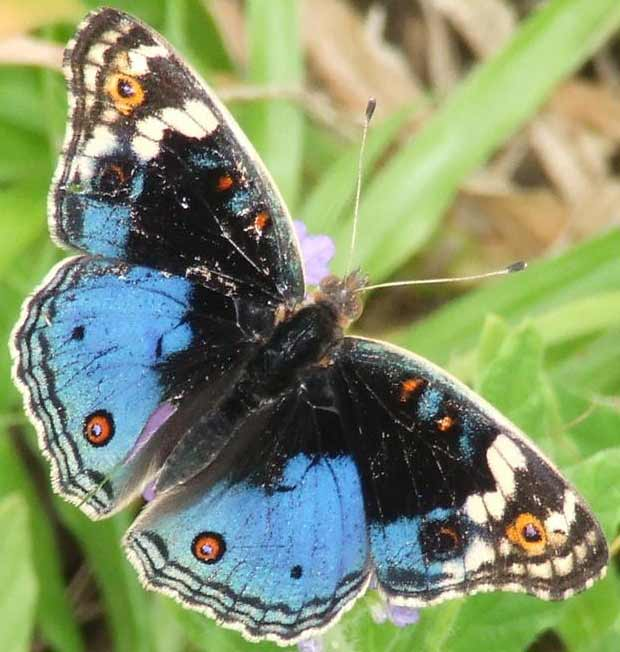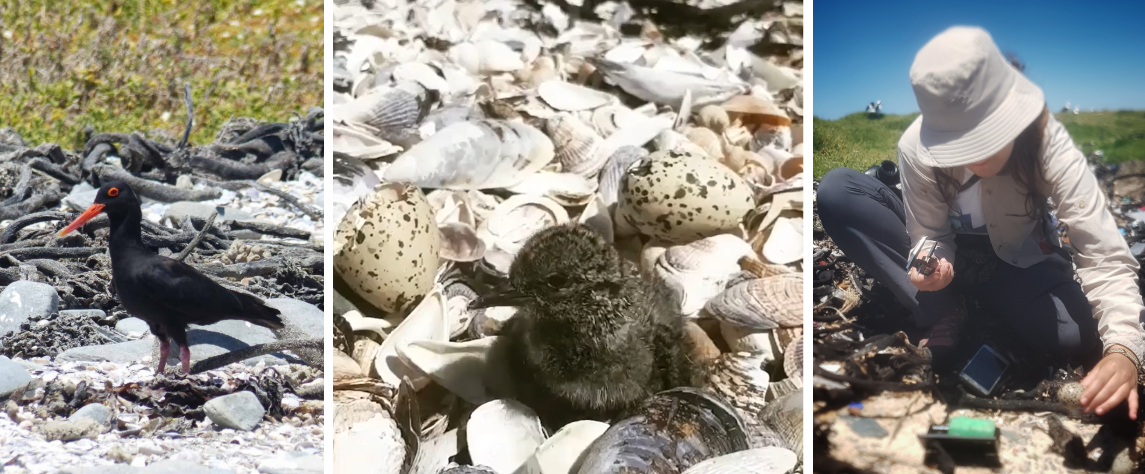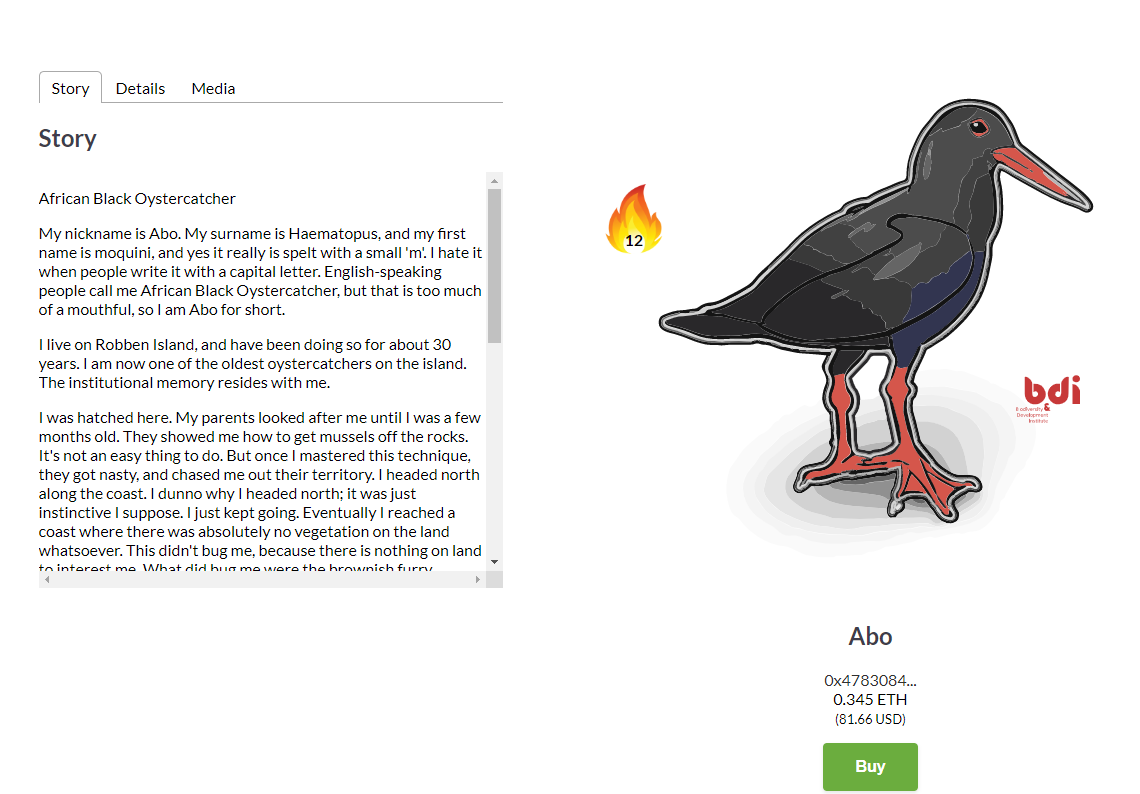How can we protect it, if we don’t know where it is?
Rio Button
July 21, 2020 · 8 min read
How can we protect it, if we don’t know where it is?
Leveraging a 2000 strong army of wildly passionate citizen scientists to track biodiversity
One month there are millions of pinkie sized dragonflies zooming around the Maldives, the next month every last one is gone. And this happens year after year.
We know that dragonflies need to lay their eggs in freshwater in order to reproduce, but the Maldives is made up of sandbanks and has no surface freshwater which brings us to the question: where are these dragonflies laying their eggs?
A curious scientist in the Maldives got his friends in the Seychelles, India, and Africa to record the dates of when they saw swarms of dragonflies. From the dates they gathered, the scientist suspected that the little dragonflies were doing massive migrations over the Indian ocean. Further research revealed this was indeed true, and that an individual Wandering Glider dragonfly (Pantala flavescens) can fly 6,000 km without landing. This is the longest migration of any insect! Over four generations these little Wandering Glider dragonflies do an annual tag-team round-trip of 18,000 km from India to East Africa, then South Africa and back again along the same route.
Sadly, not all species movements are seasonal. Not all species that disappear from an area will return, some will vanish forever. Changes in climate, a compromised or destroyed habitat, or invasion by a rival, alien species can cause an entire species to become extinct.

2 year old safeguarding 200 years of data
Though only 2 years old, South Africa’s Biodiversity and Development Institute (BDI) holds detailed databases that have recorded sightings of organisms dating as far back as 1726, for groups of organisms, including dragonflies, birds, mushrooms, fish, scorpions, frogs, trees and many more. All their records are neatly digitally stored and organized in the Virtual Museum. This data is vital as it allows the movement of species to be tracked, enabling early detection of changes that are out of line with natural cycles. They are positioned to sound the alarm and, if need be, initiate efforts to quickly haul species away from the precipice of extinction. Already, the BDI has detected a westward range shift in a number of butterfly species. But it’s not all about recording the demise of species and frantically trying to prevent it. For the BDI, it is also about detecting the recovery of species.

A conservation success story: Yes, they exist!
African Black Oystercatchers, endemic shorebirds of southern Africa with their glossy black plumage and bright red bill and legs, weren’t doing so well two decades ago; there were estimated to be only 6000 individuals left. The BDI researchers are helping to continue African Black Oystercatchers counts and breeding monitoring on Robben Island. In order to reduce disturbance when monitoring nests the BDI even developed apps to optimise data collection time. From the data they collected, the BDI has documented a four-fold increase in the number of birds on the island since population monitoring began 20 years ago and African Black Oystercatchers are once again a common sight along southern African shores.

What does an emeritus stats professor, a tech entrepreneur, and an ecologist have in common?
Well, a love of conservation, because together they direct the Biodiversity and Development Institute. Along with their researchers and interns, they lead a dedicated army of more than 2000 committed citizen scientists who are distributed across Africa. These citizen scientists typically snap photos of organisms and upload them with details regarding where and when they found it. Some citizen scientists also ring birds for tracking and record details about the birds’ condition, size, weight, and moult stage (which is very useful in understanding how climate change is affecting their natural cycles). Meanwhile, behind the scenes, the BDI works tirelessly to manage and analyse the data they collect and add historical records to their databases. The BDI also does something else. Something really incredible…
We protect only what we love, we love only what we understand, but we can only be motivated to understand it if we know it’s there…
The BDI encourages people to open their eyes and truly notice and appreciate the incredible life around them. By engaging people’s fascination with nature, people are more likely to value and protect it. This “nature” doesn’t only refer to the great outdoors, it is also about identifying the gecko on your kitchen ceiling, the insect in your flowerpot, and the birds drinking nectar from your flowers, especially during 2020’s lockdown. The BDI is seeing more and more entries like these and these “at home” entries are helping them understand how wildlife uses urban spaces better.
 While locked down in the Western Cape, South Africa citizen scientist G.J. Begemann saw this Amethyst Sunbird (Nectarinia amethystina) and logged in the Virtual Museum.
While locked down in the Western Cape, South Africa citizen scientist G.J. Begemann saw this Amethyst Sunbird (Nectarinia amethystina) and logged in the Virtual Museum.
The BDI is always fueling curiosity and is available to engage with questions, big and small. They constantly host events and keep their community of citizen scientists up to date with newsletters about new developments. The First BDI Citizen Scientist Conference took place in the Karoo Gariep Nature Reserve in February 2020. Since the COVID-19 lockdown, the BDI has initiated Citizen Scientist Hours and events using the Zoom platform. These have been enthusiastically attended by citizen scientists from all over Africa.
The BDI believes the most important thing about citizen science is the impact that participation has on those involved and the scientific value of the data, and the data’s value for conservation planning and priority setting. Participation in projects helps to make people alert to changes in habitats and fosters civic awareness, especially as the places where they used to find birds and butterflies disappear. The BDI aims to strengthen the development of groups of people who are aware of the importance and value of the environment, and who can be ambassadors for biodiversity in their communities.
BDI partners with Wildcards!
New wildcards have been launched to raise funds for the BDI! They are Abo the African Black Oystercatcher, Whacky Cappy the Capped Wheatear, and Charles the Curlew Sandpiper. Each card has a captivating fact-filled story. In the future more creatures the BDI protects will be added to the Wildcards kingdom.
You can publicly buy one of these wildcards online, which will make you the guardian of that animal. When you buy a wildcard, you must also set the price you are willing to sell it for. Every month, as the guardian of a wildcard you will give a specified portion of the selling price you set, to that animal’s representative conservation agency, in this case, the BDI. At any point, someone can buy the wildcard from you, at the selling price you specified. When someone buys the wildcard from you they must set a selling price. The new guardian of the wildcard is then responsible for giving the new monthly subscription. And so, the cycle continues the generation of funds.
Wildcards is ecstatic about connecting funders with conservation agencies having a real-world impact on the protection of wild animals.
Also read:
**Wildcards: an unprecedented means of funding conservation**
Follow Wildcards on Instagram: @wildcards_world
Follow Wildcards on Twitter: @wildcards_world
Follow Wildcards on Facebook: @wildcards.conservation
Join us on Discord
Dr Seahorse’s journey
From unravelling seahorses’ secret sounds to safeguarding the habitat of these little super dads. St...
Rio Button
June 29, 2022 · 5 min read
What wild animal leaves teddy bear footprints behind?
Photo by Helena Atkinson. Photo by Helena Atkinson. Here are some clues… Using their sticky tongues,...
Rio Button
February 07, 2022 · 9 min read
Tech innovation: Solving wildlife conservation's greatest challenge
Tech start-up Wildcards has raised over 130,000 USD for conservation organisations around the world ...
Rio Button
August 24, 2021 · 7 min read
Curious creatures under persecution
From having a deep fear of sharks to defending them. Reluctant, Grant Smith tumbled backwards off t...
Rio Button
July 26, 2021 · 8 min read
NFT Postcards for a purpose
NFT Postcards for a purpose A limited edition set of NFTs has been created in partnership with the T...
Jason Smythe
April 01, 2021 · 2 min read
Do you Care for Wild?
As rhino poaching soars, what happens to the orphaned rhino calves left behind? An orphaned baby bla...
Rio Button
February 24, 2021 · 7 min read
Where the wild things roam
South Africa’s most Endangered carnivore can’t be kept in by fences. Wildcards chatted to the man re...
Rio Button
February 23, 2021 · 10 min read
Rumours of an elusive feline in the mangrove forest
While collecting data in San Pedro de Vice Mangroves, in the Sechura desert, final year biology stud...
Rio Button
December 23, 2020 · 8 min read
South Africa’s last remaining white shark stronghold under threat
The Oceans Research Institute battles the impact of demersal longline fishing to safeguard great whi...
Rio Button
November 25, 2020 · 8 min read
Malaysia has marine mammals?
90% of Malaysians don’t know there are dolphins and whales in Malaysian waters There are at least 6 ...
Rio Button
November 17, 2020 · 9 min read



